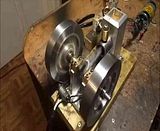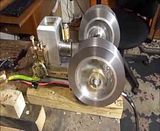You are using an out of date browser. It may not display this or other websites correctly.
You should upgrade or use an alternative browser.
You should upgrade or use an alternative browser.
Philip Duclos "Odds N Ends" hit and miss engine
- Thread starter Brian Rupnow
- Start date

Help Support Home Model Engine Machinist Forum:
This site may earn a commission from merchant affiliate
links, including eBay, Amazon, and others.
And here are the springs after cooking. They don't really look much different, except for a bit of discoloration. The steel wool which you see beside them turned from dull grey to a dark burnished copper color. Sometimes during heat treat the outer diameter of the coil will shrink a bit. This time it didn't. They still measure 0.140" diameter. Now I have to make up a couple of brass holder blocks to clamp the springs and "turn up" a coil at each end. I managed to get the entire cooking process done while the wife was out shopping. Smell??? What smell dear??? I don't smell anything!!! Must be something the dog done-----


According to the original post done by "Deonofid" way back when---It tempers, or "sets" the spring so that it doesn't loose the memory of its shape/length over a protracted period of usage. I can't say if this would happen or not, but I have seen the same advice given on other spring winding tutorials. I always do it. Maybe I could get away without doing it, but I've never tried.
Now---Governor spring magic--A certain amount of black magic and guessing is involved for the next step---How long are the governor springs to be. Well If we measure outside to outside of the #2-56 screw in the governor weights, then subtract the inside diameter of the springs, etc,---see the drawing. You can arrive at the true geometric length from center to center of the loops in the ends of the springs. The black magic part lays in guessing how much shorter the center to center should be in order to hold SOME spring tension on the governor weights when they are in the "at rest" position. Sometimes I get it right, sometimes I get it wrong. One of the good things is, if you guess wrong and want to shorten the spring up a bit, you can.
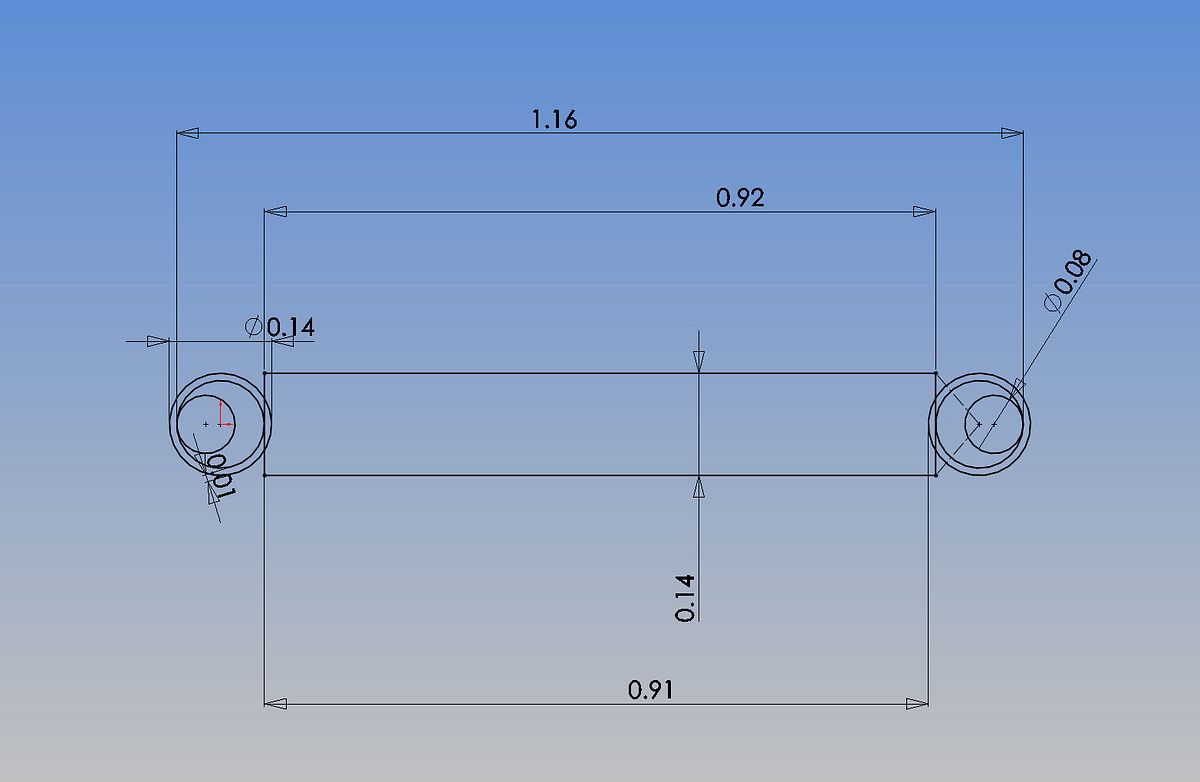

Next step is to take two small peices of brass or steel, or aluminum, cut them to whatever length you have come up with for the length of the spring inside the loops on the end, (I guessed .875"). Set them side by side in the vice and drill a hole full lenght thru them, half in each peice. The hole should be very close to the maximum diameter of the coils, in my case 0.140"
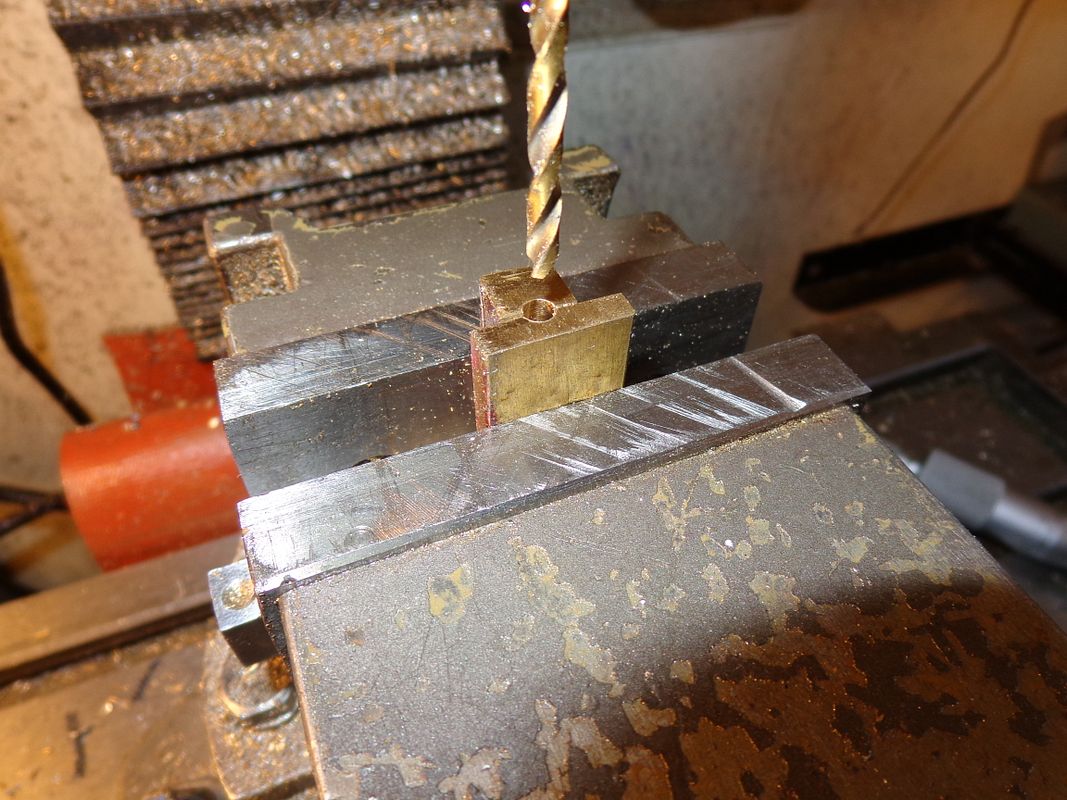


$40.02
$49.99
Becker CAD 12 3D - professional CAD software for 2D + 3D design and modelling - for 3 PCs - 100% compatible with AutoCAD
momox Shop

$94.99
$109.99
AHS Woodmaster 4400 Maintenance Kit for Outdoor Wood Boiler Treatment
Alternative Heating & Supplies

$24.99
$34.99
Bowl Sander Tool Kit w/Dual Bearing Head & Hardwood Handle | 42PC Wood Sander Set | 2" Hook & Loop Sanding Disc Sandpaper Assortment | 1/4" Mandrel Bowl Sander for Woodturning | Wood Lathe Tools
Peachtree Woodworking Supply Inc

$519.19
$699.00
FoxAlien Masuter Pro CNC Router Machine, Upgraded 3-Axis Engraving All-Metal Milling Machine for Wood Acrylic MDF Nylon Carving Cutting
FoxAlien Official

$29.95
Competition Engine Building: Advanced Engine Design and Assembly Techniques (Pro Series)
Amazon.com Services LLC

$39.99
$49.99
Sunnytech Low Temperature Stirling Engine Motor Steam Heat Education Model Toy Kit For mechanical skills (LT001)
stirlingtechonline

$24.99
$27.99
HOZLY 5PCS/Lot ISO30 Tool Holder Clamp Flame Proof Rubber Claw CNC Machines Automatic Tool Changer
HOZLY

$89.99
Outdoor Wood Boiler Water Treatment Rust Inhibitor- AmTech 300 & Test Kit
Alternative Heating & Supplies
![DreamPlan Home Design and Landscaping Software Free for Windows [PC Download]](https://m.media-amazon.com/images/I/51kvZH2dVLL._SL500_.jpg)
$0.00
DreamPlan Home Design and Landscaping Software Free for Windows [PC Download]
Amazon.com Services LLC

$12.56
$39.95
Complete Plans for Building Horse Barns Big and Small(3rd Edition)
ThriftBooks-Atlanta

$99.99
AHS Outdoor Wood Boiler Yearly Maintenance Kit with Water Treatment - ProTech 300 & Test Kit
Alternative Heating & Supplies
Then we use what I call "The two jacknife method" to raise a few coils up at the first end. This consists of setting the spring in the hole thru the blocks, closing the vice enough that everything stays in place with 2 or 3 coils of the spring sticking up above the block, and sliding the blade of jacknife #1 thru the spring next to the block, then sliding jacknife #2 in over the blade of jacknife #1 and prying (gently) up to about 90 degrees. Jacknife #1 serves to keep the entire spring from sliding up out of the blocks when you pry up with jacknife #2. Once you have done this, loosen the vice, flip the blocks and the spring end for end, and repeat.
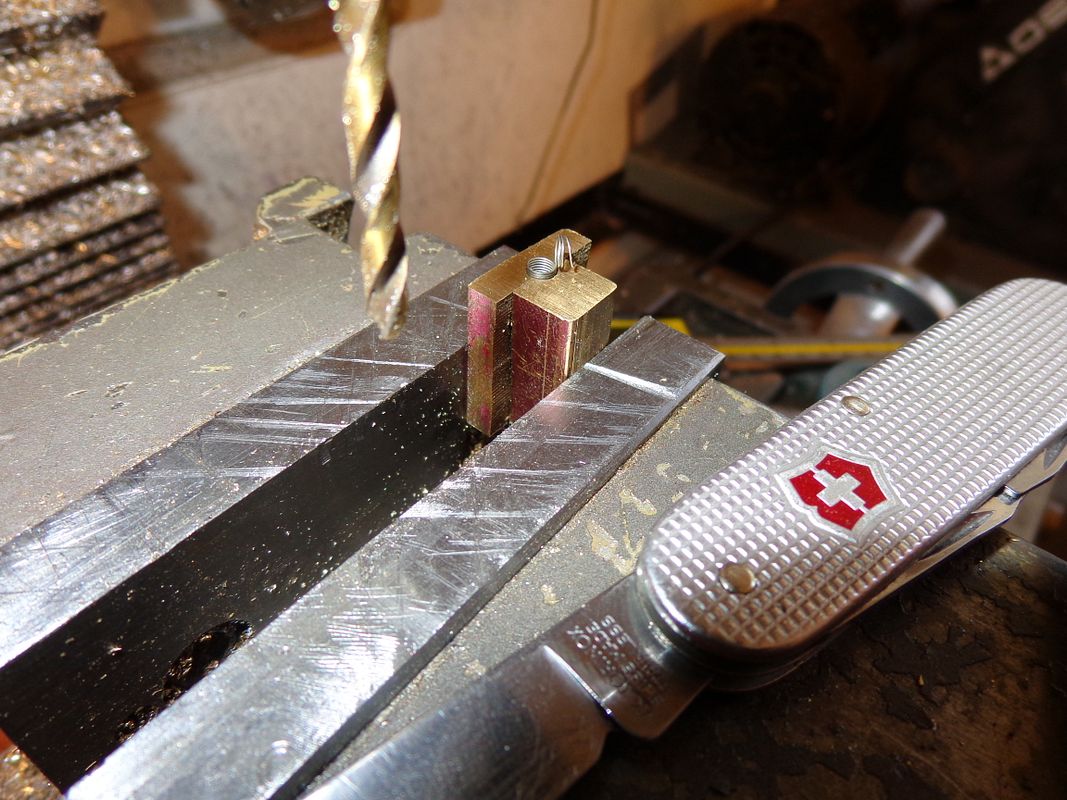

Then, if you have lived a good clean life like I have, you should end up with something close too this!!! We still don't know if they are the correct length or not. Now we have to install them on the engine, and hope we have guessed right. Of course, if we find we have guessed wrong, we can shorten up the two little blocks (I would try this in increments of 1/8"), cut the loop of one end of the spring, and shorten it accordingly. What we are aiming for is a set of springs that will let the engine fire once, coast for 8 or 13 "miss" cycles, then fire once again, and repeat. This is, of course, the Hit and Miss fans Nirvana---sought by many, actually achieved by few!!!
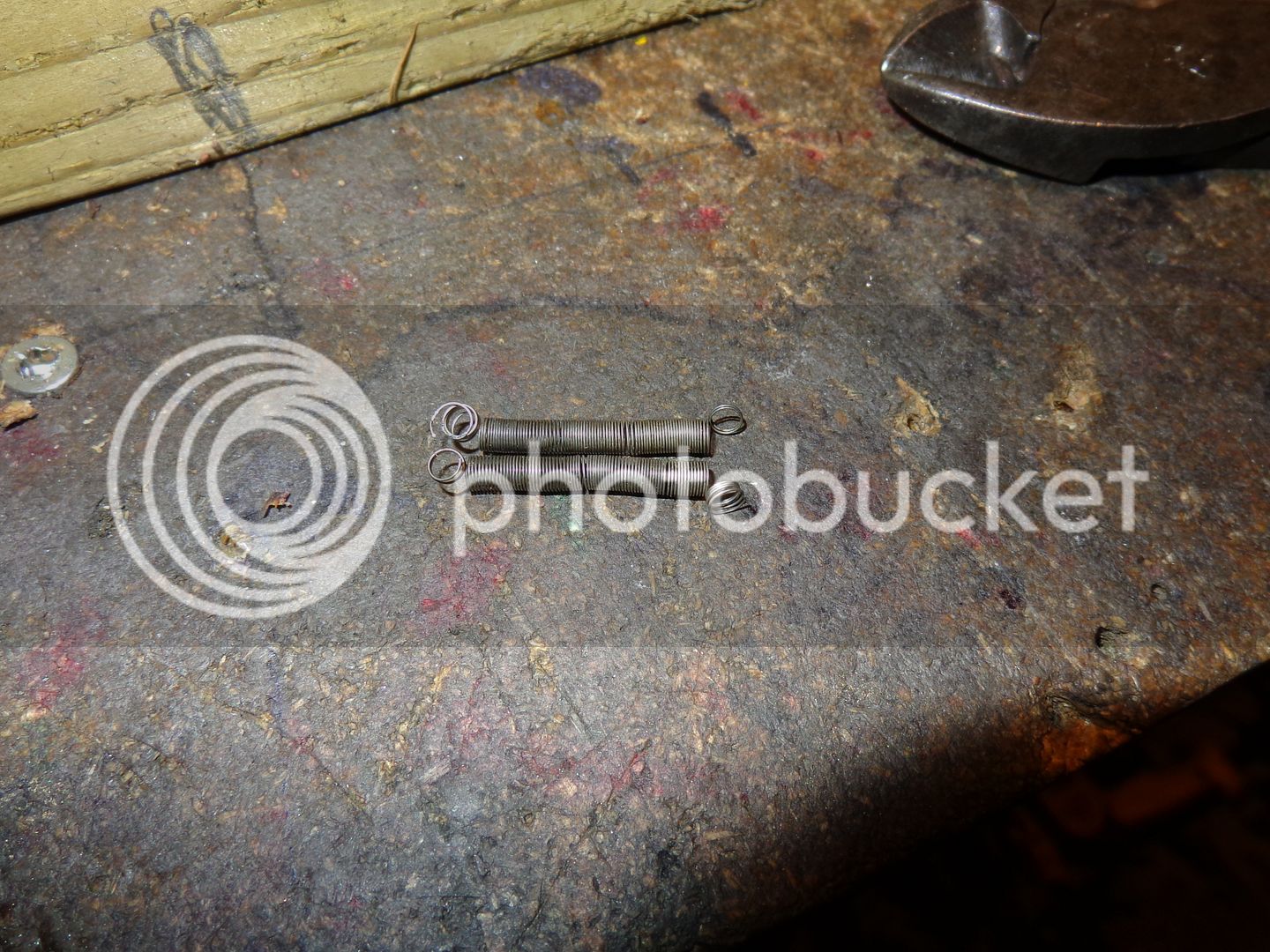 .
.

And there, (God forbid that I should ever leave you hanging) are the governor springs in place. I have the rather cheesy feeling that I have made them a bit too long, but I have to start the engine to find out. And whats that big ugly shcs. doing on the underside of the hub?--Thats the thing that holds my flywheel hub in place---its situated directly over the 3/32" square key, which still has to be shortened, and I found that a set screw kept coming loose.
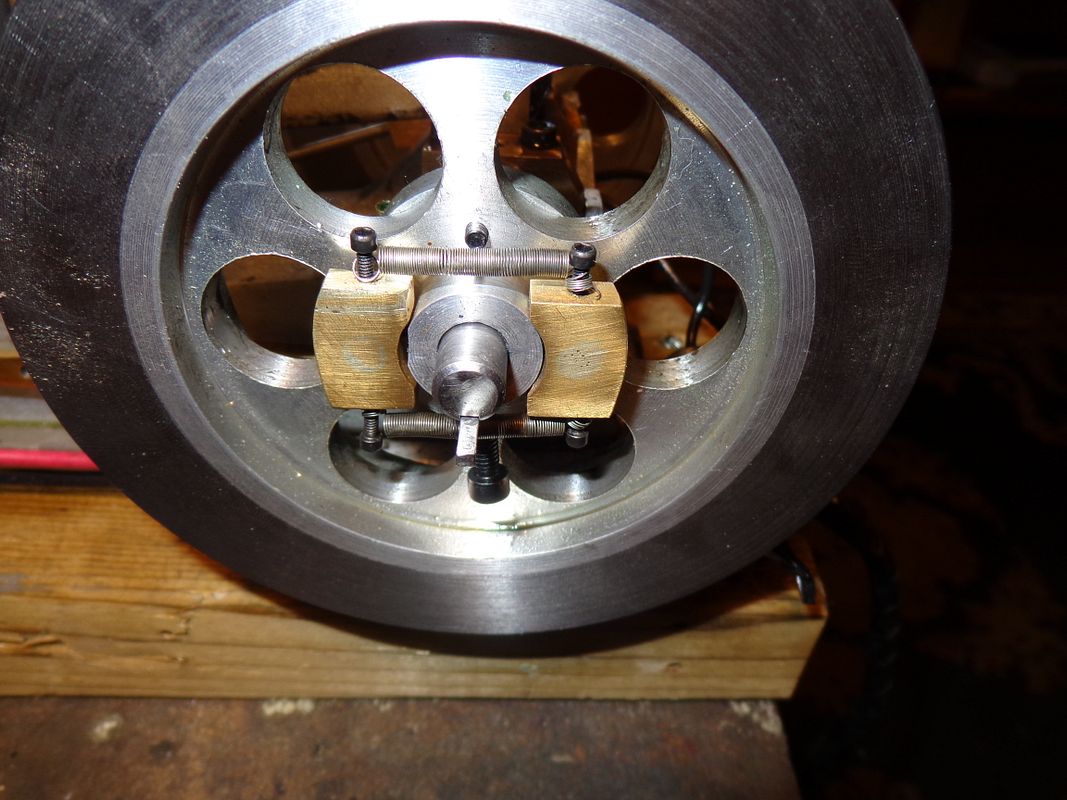

As I suspected, the springs are a bit too long, but results are very promising. I will shorten them by 1/8" and try again after supper. It did actually start and run, but at an extremely low rpm., slower than I have ever seen an i.c. engine run for about 40 seconds before giving up the ghost!!!.
Generatorgus
Senior Member
- Joined
- Feb 25, 2010
- Messages
- 362
- Reaction score
- 167
Brian, I thought you said "run faster". Why??
It's music to my ears.
Good show.
GUS
It's music to my ears.
Good show.
GUS
This was my last run from yesterday evening. Although the engine is running slowly and consistently in the video, it is actually running too slow to do any real work. A hit and miss is supposed to hit and miss exactly as in the video, but when they run this slowly, there isn't enough inertia in the flywhels to keep it going and start into full "hit" mode when the load comes onto it. It just dies because it is running so slow. I have taken the springs I wound down to half the lenght I started with, and I feel that I want to take out even more to bring the rpms up about 50% greater than what you see in this video. I have tried it tonight with a rubber band wrapped around the governor weights (to give the same effect as a shorter spring would give) and the rpm's have come up considerably closer to what I want as an end result. It may be that the .010 music wire I wound the springs from is simply too light for this engine. I may have to wind a set from .015 music wire to get to where I want to be.
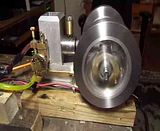

There we are--The last video. The springs ended up being 1/2" center to center of the loops (free length) to get it to this speed. I had 2 more spring shortning sessions tonight, 1/8" each time. I did manage to buy the fuel ball and cap off an antique Coleman Iron to make a fuel tank for this engine for $30 from a guy in Georgetown, Ontario. The engine needs to be cleaned up now, as can be seen in the video. These damned open crankshaft engines stay clean for about 2 minutes when they are running.
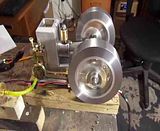

aonemarine
Well-Known Member
- Joined
- Nov 18, 2012
- Messages
- 887
- Reaction score
- 212
Looks and sounds great!!! So what's the next project going to be???
AussieJimG
Well-Known Member
- Joined
- Oct 17, 2010
- Messages
- 890
- Reaction score
- 118
I am glad to see it done Brian, but sad to see it finished as it means the end of the story. A great journey. Thanks.
Jim
Jim
mygrizzly1022
Member
- Joined
- Sep 4, 2010
- Messages
- 75
- Reaction score
- 7
It doesn’t have to be the end of the story. An engine as nice as that deserves something to run.
Here you go Brian; this should be right up your alley. [ame]http://www.youtube.com/watch?v=CNvZyvDVaTw[/ame]
You can use it to split your kindling for the fireplace. Good job on your engine I can’t help but admire you skill and patience. Well done sir.
Regards ……Bert
Here you go Brian; this should be right up your alley. [ame]http://www.youtube.com/watch?v=CNvZyvDVaTw[/ame]
You can use it to split your kindling for the fireplace. Good job on your engine I can’t help but admire you skill and patience. Well done sir.
Regards ……Bert
aonemarine
Well-Known Member
- Joined
- Nov 18, 2012
- Messages
- 887
- Reaction score
- 212
Bert, that's just way too cool!! Go for it Brian, its way better than my suggestion for a next project.
Miniature snow blower....
Miniature snow blower....
Similar threads
- Replies
- 356
- Views
- 66K
- Replies
- 394
- Views
- 79K




![MeshMagic 3D Free 3D Modeling Software [Download]](https://m.media-amazon.com/images/I/B1U+p8ewjGS._SL500_.png)











































